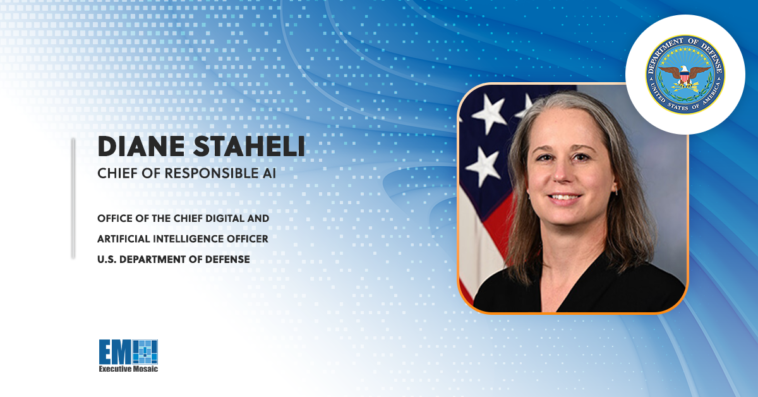Recognized by the Department of Defense for its transformative potential, artificial intelligence has become a key focus area in the department’s efforts to adapt to the evolving, digitally-driven modern battlefield. Though AI offers a wide array of benefits across many use cases, its successful deployment cannot be achieved without careful consideration of the ethics involved in its adoption.

Diane Staheli, chief of responsible AI at the DOD’s Chief Digital and AI Office, plays a key role in the department’s work to address new challenges posed by the expanding relationship between humans and technology. During ExecutiveBiz’s Trusted AI and Autonomy Forum, Staheli will participate in a panel discussion on the DOD’s race to develop AI tools that are not only effective, but also ethical and secure. As a panelist, she will come together with additional speakers to offer her insights on human-machine interaction and the factors involved in ensuring this relationship is positive.
Click here to learn more, and click here to register to attend the event.
Established in June 2022, CDAO represents a governing force for DOD AI use. Since its inception just over a year ago, the office has seen success in five AI-related strategic initiatives for fiscal year 2023 – digital talent management, improved data quality, AI and machine learning scaffolding, business performance metrics and Joint All-Domain Command and Control.
It has also taken on the task of leading the RAI Strategy & Implementation Pathway, a plan developed to guide the department as it deploys emerging AI technologies that Staheli played a key role in creating.
This “important step forward,” she said in a Q&A published to CDAO’s blog, “formalizes our approach to RAI and specifically defines the tasks, as well as the roles and responsibilities for execution.”
Solidifying each step and providing a set timeline is something Staheli expects to advance the DOD’s pursuit of RAI. Already, CDAO is making new efforts in line with the RAI S&I Pathway, including identifying technology demands, developing an AI curriculum and cultivating partnerships to help support new and ongoing initiatives.
Staheli’s view of RAI is shaped by 13 years at the Massachusetts Institute of Technology Lincoln Laboratory, where she led research groups spanning multiple national security issues, all of which she said were joined by the common thread of AI.
In her most recent role at the laboratory, she guided the artificial intelligence technology group for over two years. While serving in this position, she focused on human-AI interaction, explainable AI, decision science, autonomy, socio-technical systems and user-centered design.
Staheli was appointed to her role at CDAO at the time of its establishment, a move she described as a “natural evolution” of her work, which also includes time with the former Joint Artificial Intelligence Center.
Moving forward, Staheli’s vision for CDAO surrounds the expansion and maturation of the office’s current efforts with a target goal of creating a minimally viable product of its suite of RAI tools.





